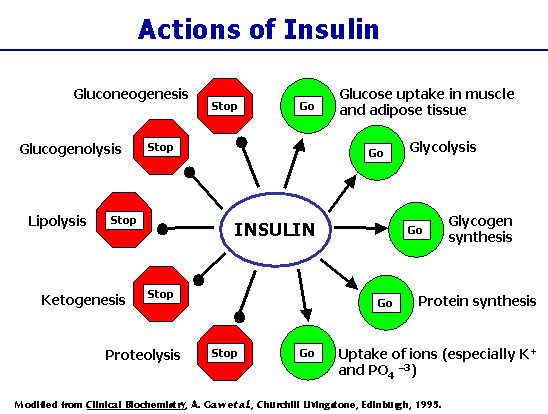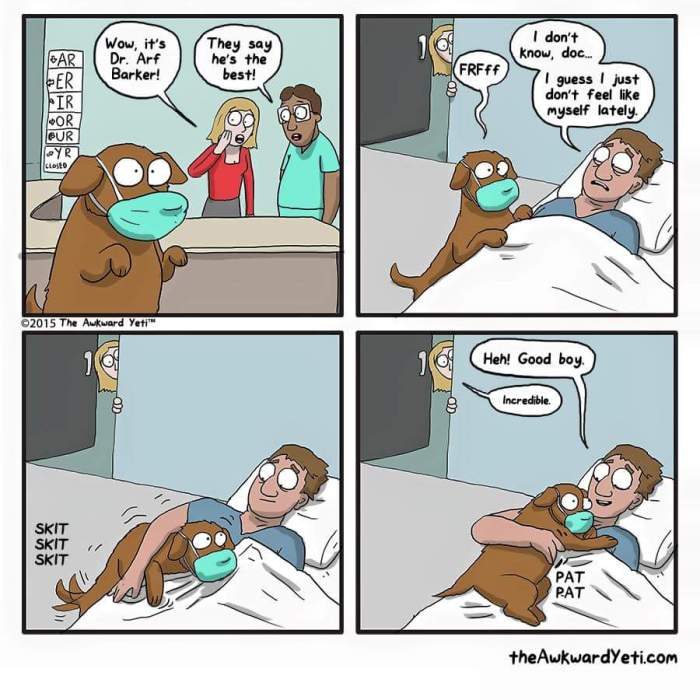Month: August 2016
Renal Replacement Therapy – Considerations
Indications for Renal Replacement Therapy (notes from TrueLearn)
-broad term : hemodialysis, peritoneal dialysis, hemofiltration, renal transplant
-CRRT is over 24hrs, best for HD unstable patients
Chronic Renal Failure indications
-fluid overload
-uremic symptoms
-ftt
-malnutrition
-GFR criteria
Indications in ICU patient
-oliguria/anuria
-pulmonary edema unresponsive to diuretics
-uncompensated metabolic acidosis (ph35, creatinine >400, hyperkalemia >6.5
Succ will raise K same as normal patient
watch fluid status and hemodynamics
avoid nephrotoxic agents (some a/b, nsaids)
Pediatric Anesthesia Reference Guide

UCSF once had an excellent PDF of the essentials to pediatric anesthesia (doses, tube sizes, etc), but that has since been lost to the internet. In searching for a replacement, I came across the Open Anesthesia page on peds, and it has just about everything!
Check it out here: https://www.openanesthesia.org/pediatric_anesthesia_anesthesia_text/
Note that when waking a patient up on precedex (deep) use 0.3mcg/kg as your dose and be sure to extubate deep (1 mac) .
Another reference site is found at Stony Brook, which is a bit more specific to drug doses, see here: https://medicine.stonybrookmedicine.edu/anesthesiology/teaching/peds-drug-dosages
In the interest of internet information preservation, the full text of the website is below:
Pediatric Anesthesia (Anesthesia Text)
Introduction
Anesthesia-related morbidity and mortality is higher in infants than adults, as well as in younger compared to older children. In particular, airway complications are more likely in very young infants. Critical events are highest in infants < 2 kg [Tay et. al. Paediatr Anaesth 11: 711, 2001]
Preoperative Checklist
Warm the room, peds Bear hugger, overhead warming lights, age appropriate headrest and monitors. IV setup in room. See patient early to determine need for premedication needs. For latex precautions, use latex free gloves, black bag on circuit, latex-free IV setup (clear masks are OK, as are ETT, LMA, and pink tape)
- Warm the room
- Peds Bair hugger
- Overhead
- Warming lights
- Age appropriate headrest and monitors
- IV setup in room
- See patient early to determine need for premedication needs
- For latex precautions, use latex free gloves, black bag on circuit, latex-free IV setup (clear masks are OK, as are ETT, LMA, and tape)
Pediatric Airway
The tongue is relatively larger, thus making a disproportionate contribution to airway obstruction and moving the glottis anteriorly (especially in children with craniofacial abnormalities, NMJ or CNS disease, tumors, hemangiomas, or URIs). Flexion of an infant’s head may collapse the airway
Pediatric patients often have less pulmonary reserve than adults, and require significantly more oxygen intake, thus they are prone to apnea during direct laryngoscopy
The larynx in infants is located at C3-4 (as opposed to C4-5 in adults). The infant epiglottis is large but short and narrow, possibly making a direct view of the larynx easier than in an adult. Note that the posterior commissure is relatively cephalad, predisposing the anterior sublaryngeal airway to trauma from the ETT. The narrowest portion of the infant airway is the cricoid cartilage, which can lead to resistance after passing an ETT through the cords
Cuffed vs. Uncuffed ETT
In 2009 a multicenter study comparing Microcuff tubes to uncuffed tubes in 2246 children showed that rates of tube exchange were 2.1% with cuffed compared with 30.8% for conventional tubes (p < 0.0001), and that rates of post-extubation stridor were equal in both groups. Furthermore, the cuff significantly improved the accuracy of the ET monitor. Anesthesia providers could ventilate with an average cuff pressure of 10 cm H20 [Weiss M et al. Br J Anaesth 103: 867, 2009].
Pediatric Endotracheal Tube Size
Age Internal Diameter (mm) Depth (cm) Preterm 2.5 6 – 8 Term 3.0 9 – 10 6 months 3-3.5 10 1 – 2 years 4.0 10 – 11 3 – 4 years 4.5 12 – 13 5 – 6 years 5.0 14 – 15 10 years 6.0 16 – 17 Pediatric Endotracheal Tube Depth
For preemies and neonates (cm) = weight (in kg) + 6 For 1 year or older (cm) = age + 10 cm
Pediatric Airway Equipment
Age Miller Blade < 32 weeks 00 Term 0 (< 3 kg) 3-18 mo. 1 (3-10 kg) > 18 mo 2 (> 12 kg) Pediatric LMA Size
LMA sizes ~ weight (kg) / 20 + 1 (round to nearest 0.5)
Organ Systems
Cardiovascular
Fetal circulation displays 1) increased PVR 2) decreased Qpulm 3) decreased SVR 4) RtoL shunting through foramen ovale. Hypoxemia or acidosis in the newborn can cause a return to fetal circulation
Neonatal hearts are relatively non-compliant and thus stroke volume is relatively fixed – they rely entirely on heart rate to manage cardiac output
Murmurs, abnormal heart sounds, dysrhythmias, and cardiomegaly are all important when noted in a newborn. EKG, CXR, and echo are therefore often required
Normal Physiologic Variables
Age BP (mmHg) HR (/min) RR (/min) Hct (%) 1 kg 45/30 120 – 180 40 – 50 2 kg 55/35 110 – 180 40 – 50 3 kg 65/40 100 – 180 40 – 60 45 – 65 Neonate 75/45 100 – 180 35 – 55 45 – 65 6 mo. 85/50 80 – 180 30 – 50 30 – 40 (nadir) 1 year 95/55 80 – 130 20 – 30 34 – 42 10 year 110/60 60 – 100 20 35 – 43 Adult 110/60 60 – 100 15 40 – 50 Hypovolemia
Hypotension is a late finding in pediatric patients (children may maintain a normal blood pressure until 35% of blood volume is lost). Tachycardia is sensitive but not specific indicator. Prolonged capillary refill (> 2 seconds), especially when combined with tachycardia, is more specific, although it may be difficult to measure. Cold skin and decreased urine output may be present. Weak pulses, mottling, cyanosis, and impaired consciousness may all precede hypotension. In fact, hypotension is an ominous sign in pediatric patients
Hypovolemia in Pediatrics: Signs
- Tachycardia: sensitive but not specific. Resolution may help guide therapy
- Delayed Capillary Refill: specific if > 2 seconds
- Others: weak pulses, mottling, cyanosis, and impaired consciousness (may all precede hypotension), cold skin, decreased urine output
- Hypotension: late finding. OMINOUS
Pulmonary
The lung is not fully formed at birth, and increases from 20 MM alveoli to 300 MM by 18 months of age. Newborn ribcages are particularly compliant and have a circular (non-ellipsoid) configuration as well as a horizontal (non-oblique) insertion of the diaphragm, all of which lead to inefficient diaphragmatic contraction. Worse, full-term infant diaphragms only have 25% type I (slow twitch) fibers, as opposed to 55% in adults
FEN/Renal System
Newborns
Newborns have decreased GFR, decreased ability to excrete solid material, and decreased ability to concentrate urine (ie conserve water). Adult values of GFR are reached between 12 and 24 months of life
Age (weeks) Urine Output (ml/h) 20 5 cc/hr 30 18 cc/hr 40 50 cc/hr This limited renal resorptive function explains the “physiologic” decrease in bicarbonate (and corresponding acidosis) in newborns (pH 7.26-7.29 at birth, 7.37 at 24h, 7.40 at 1 week)
Estimated blood volume changes with age – at term, the body is 78% water, and adult proportions are not reached until between 9 and 24 months.
Infants have higher plasma chloride and lower bicarbonate (and pH). In the first ten days of life, normal K values may be as high as 6.5 mEq/L. This drops to 3.5-5.5 mEq/L after 2-3 weeks of life. Water exchange is also negative during the first week of life due to limited intake. Infants are at high risk for both over and under hydration
Children
Maintenance Requirements in Children
Weight (kg) Maintenance Requirements in Children (mL/hour) 0-10 4 (mL/kg) 11-20 40 + 2 (mL/kg) > 20 kg 60 + 1 (mL/kg) Replacement of Losses
Procedure Insesnsible losses Non-invasive (inguinal hernia, clubfoot) 0-2 cc/kg/hr Mildly invasive (uteteral reimplantation) 2-4 cc/kg/hr Moderately invasive (bowel reanastamosis) 4-8 cc/kg/hr Significantly invasive (NEC) > 10 cc/kg/hr Endocrine
Intraoperative Glucose Infants: 4 mg/kg/min = 240 mg/kg/hr maintenance requirements D5 = 50 mg/mL Delivery of D5 @ > 4 mL/kg/hr may lead to hyperglycemia
Hematology
At birth, full term infants have 18-20 g/dL of hemoglobin, 75% of which is HgF (which normalizes by 3-6 months). Hgb will naturally decrease as the infant progresses, reaching a nadir as low as 9-10 g/dL (avg 11.2 g/dL) around 2 months of age [Harriet Lane, 16th ed. CV Mosby, 2002]. In premature infants, however, the nadir may be as low as 6-7 g/dL at 3 or 4 months of age
Cross matched blood should be available for newborn surgery. Assessment of clotting function should be considered because prothrombin as well as factors II, VII, and X are limited in young livers
Blocks
Caudal Block
- Equipment: 22g B-bevel needle (or angiocath)
- Drugs: 0.25% bupivacaine or 0.2% ropivacaine +/- morphine 25 ucg/kg or hydromorphone 6 ucg/kg
- Desired level and volume:
- Sacral Block: 0.5 ml/kg
- Midthoracic Block: 1.25 ml/kg
Complicating Issues in Peds
Upper Respiratory Tract Infection
Children recovering from URI are at increased risk for respiratory complications. For short procedures via mask, the increased risk is minimal. If reactive airways accompany the infection, the effects of URI may last 2-7 weeks. In particular, those who already have asthma, bronchopulmonary dysplasia, < 1 yoa, sickle cell, or live in a household of smokers are at high risk, suggesting a “two hit” phenomena [Tait et. al. Anesthesiology 95: 299, 2001]. Bronchial hyperreactivity may last as long as 7 weeks after URI [Collier et. al. Am Rev Resp Dis 117: 47, 1978]. Note that in these patients MASK anesthetics have significantly lower complications than LMA or ETT
If an ETT tube is required, the risk of anesthesia in an infant can be increased as much as 10-fold when compared to an infant with no URI and which does not require ETT. Risk of an LMA are about halfway between those of a facemask and an ETT
Postoperative Croup (< 3 hrs after extubation)
IV decadron 0.25 – 0.5 mg/kg Racemic epinephrine 0.25-0.5 mL of 2.25% solution in 2.5 ml NS
Outpatient Surgery
Inguinal herniorrhaphy, hypospadias repair, and various orthopedic procedures are performed on an outpatient basis in the pediatric population. LMA + caudal block (1 mg/kg 0.125-0.25% bupivacaine) can provide excellent postoperative pain control and lower the anesthetic requirements. A more dilute anesthetic may be used to maintain ambulation
Ex-Premature Infant
Post-operative apnea is always a concern, however it is impossible to fully develop a monitoring protocol [Cote et. al. Anesthesiology 82: 809, 1995]. Apnea is rare after 48 weeks of conceptual age, but the incidence is not zero. The decision of whether or not to admit an ex-premature infant s/p surgery must be individualized. The most conservative approach would be to admit all infants younger than 60 weeks post-conception but this is often impractical. Note that many of these children have chronic lung conditions that last as many as ten years (mostly secondary to reactive airway disease). Hepatic and renal function, as well as developmental delay may also occur.
Cote combined data from eight prospective studies (255 patients) to develop an algorithm based on gestational age, post-conceptual age, apnea at home, size at gestational age, and anemia [Cote CJ et. al. Anesthesiology 82: 809, 1995]. Cotes data showed that the incidence of apnea following inguinal hernia repair did not fall below 5% until gestational age reached 35 weeks and post-conceptual age reached 48 weeks, and that the incidence of apnea following inguinal hernia repair did not fall below 1% until gestational age reached 32 weeks and post-conceptual age reached 56 weeks (or post-gestational 35 weeks with post-conceptual 54 weeks). Any infant that exhibits apnea, has a history of apnea, or is anemic, should not undergo outpatient surgery.
Formulas
Maintenance Requirements in Children
Weight (kg) Maintenance Requirements in Children (mL/hour) 0-10 4 (mL/kg) 11-20 40 + 2 (mL/kg) > 20 kg 60 + 1 (mL/kg) Replacement of Losses
Procedure Insesnsible losses Non-invasive (inguinal hernia, clubfoot) 0-2 cc/kg/hr Mildly invasive (uteteral reimplantation) 2-4 cc/kg/hr Moderately invasive (bowel reanastamosis) 4-8 cc/kg/hr Significantly invasive (NEC) > 10 cc/kg/hr Intraoperative Glucose
Infants: 4 mg/kg/min = 240 mg/kg/hr maintenance requirements D5 = 50 mg/mL Delivery of D5 @ > 4 mL/kg/hr may lead to hyperglycemia
Medications for Children
Preoperative Medication in Children
PO Nasal IV IM Midazolam 0.5 – 1.0 mg/kg 0.05 – 0.10 mg/kg Fentanyl 1 – 3 ucg/kg Morphine 0.05 – 0.10 mg/kg Sufentanil 0.25 – 0.5 ucg/kg Ketamine 2-4 mg/kg 4-6 mg/kg Resuscitation Medication in Children
- Epinephrine = 10-100 ucg/kg for arrest (100 ucg/kg in ETT), 1-4 ucg/kg for hypotension
- Atropine = 0.01 – 0.02 mg/kg (0.3 mg/kg in ETT) – actual dose 0.1 – 1 mg
- Adenosine = 0.1 mg/kg (max dose 6 mg)
- Lidocaine = 1-1.5 mg/kg
- SCh = 2-3 mg/kg
- Rocuronium 1 mg/kg
- Calcium chloride = 10-20 mg/kg (dilute to 10 mg/cc or else veins will sclerose, try to give centrally if possible)
- Bicarbonate = 1 mEq/kg (dilute to 1 mEq/cc or else veins will sclerose)
- Naloxone = 0.1 mg/kg
- DEFIBRILLATION = 2 J/kg (can increase up to 4 J/kg)
Preoperative Medication in Children
- Midazolam 0.05-0.1 mg/kg IV (0.5-1 mg/kg PO, 15 mg max)
- Methohexital 1-2 mg/kg IV (25-30 mg/kg PR, 500 mg max)
- Ketamine 1-2 mg/kg IV, 10 mg/kg IM, 5-8 mg/kg PO
- Sodium Pentothal 1-2 mg/kg IV (separation), 4-6 mg/kg IV (induction)
- Propofol 0.1-1 mg/kg IV (separation), 2-4 mg/kg IV (induction)
- Etomidate 0.2-0.3 mg/kg IV
Antibiotic Doses in Children
- Cefazolin 25 mg/kg q6-8h up to 1-2 grams
- Cefotaxime 20-30 mg/kg q6h
- Ampicillin 50-100 mg/kg q6h up to 3 grams
- Gentamicin 2-2.5 mg/kg q8h (must monitor serum levels, longer interval in renal impairment)
- Clindamycin 5-10 mg/kg q6-8h up to 900mg
- Mezlocillinn 50-100 mg/kg q6h up to 2g
- Vancomycin 10 mg/kg q6h up to 1g
Other Useful Medication in Children
- Glycopyrrolate 0.01 mg/kg IV, IM, ETT (max 0.4 mg)
- Morphine 0.05 – 0.1 mg/kg IV (max 0.4 mg/kg)
- Fentanyl 1-5 ucg/kg IV
- Ketorolac 0.5 mg/kg IV
- Tylenol 20 mg/kg PO, 40 mg/kg PR, IV 10-15mg/kg
- Zofran 0.05-0.15 mg/kg
- Droperidol 20-25 ucg/kg
- Dexamethasone 0.1-0.5 mg/kg for pain, N/V prophylaxis
- Neostigmine 0.07 mg/kg
- Dexamethasone 0.5-1 mg/kg for tracheal edema
- Solumedrol 1 mg/kg IV
- Dexmedatomidine (Precedex) 0.3-0.5mcg/kg slowly at end of case prophylaxis for emergence delerium
Sources
Smith’s Anesthesia for Infants and Children, 8th Edition. Chapters 5, 30, 39 (TABLE 30-5)
PubMed
G E Rasmussen, C M Grande Blood, fluids, and electrolytes in the pediatric trauma patient. Int Anesthesiol Clin: 1994, 32(1);79-101 [PubMed:8144255]
Insulin Pumps and Infusions

Nice quick reference from the Joslin Diabetes Center and Clinic on management of perioperative blood glucose in patients undergoing surgery, a few things to note:
- Insulin pumps can be maintained at basal rate throughout surgery
- Maintenance IVF need NOT have dextrose
- If starting insulin infusion, give fluids with a substrate, e.g. D5W at 40 ml/hr or D10W at 20 ml/hr
- if MAJOR surgery start infusion and track throughout case (a line)
- i/o generally check BG every 2hrs
- 24hr glucose if on infusion should be 50g
- Protocols vary by institution for bolus/infusion rates, generally follow local guides (this sheet has one)
See: http://www.joslin.org/Inpatient_Guideline_10-02-09.pdf for more details!
